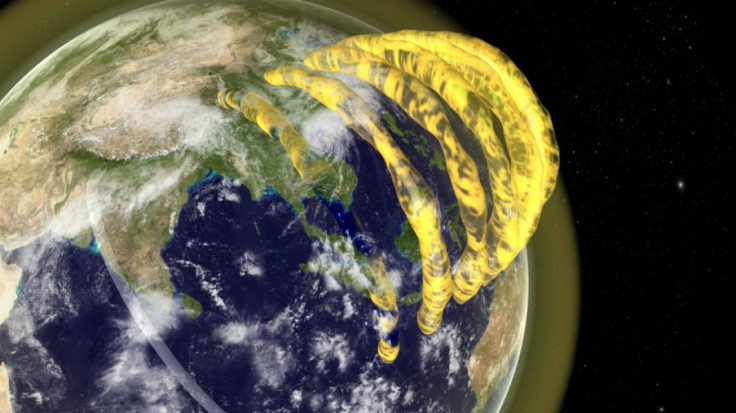Plasma tubes in Earth's magnetosphere seen for the first time

Plasma tubes of ions stretching from the Earth's ionosphere to the plasmasphere have been detected by a radio telescope array situated in Australia.
This is the first observational evidence of the structures predicted decades ago.
Discovered by an undergraduate student of the ARC Centre of Excellence for All-sky Astrophysics (CAASTRO) and the School of Physics at the University of Sydney, the alternating tubes of high and low density plasma were seen as they drifted slowly and aligned with the Earth's magnetic field.
A creative use of the Murchison Widefield Array helped create a 3D picture of the moving plasma tubes in the inner layers of the magnetosphere.
"The discovery of the structures is important because they cause unwanted signal distortions that could, as one example, affect our civilian and military satellite-based navigation systems. So we need to understand them," said lead author of the study, Cleo Loi of the ARC Centre of Excellence for All-sky Astrophysics (CAASTRO) and School of Physics at the University of Sydney in Australia.
The award-winning undergraduate thesis was published in Geophysical Research Letters.
The magnetosphere occupied by the Earth's magnetic field is filled with plasma that is created by particles in the atmosphere being ionised by sunlight.
Ionosphere
The innermost layer is the ionosphere, and above that is the plasmasphere.
The two layers are believed to be embedded with a variety of strangely shaped plasma structures.
The latest study confirms this by providing the first images.
"We measured their position to be about 600 kilometres above the ground, in the upper ionosphere, and they appear to be continuing upwards into the plasmasphere. This is around where the neutral atmosphere ends, and we are transitioning to the plasma of outer space," explained Loi.
Using the Murchison Widefield Array (MWA), a radio telescope located in the Western Australian desert, Ms Loi mapped large patches of the sky and used the MWA's rapid snapshot capabilities to create a real-time visual of the plasma.
The pattern revealed stripes of high-density plasma neatly alternated with stripes of low-density plasma. This pattern drifted slowly and aligned beautifully with the Earth's magnetic field lines, like aurorae.
The MWA consists of 128 antenna "tiles" spread over an area roughly three by three kilometres. By separating the signals from tiles in the east from the ones in the west, the astronomers gave the MWA a 3D capability.
"We were able to measure the spacing between them (tubes), their height above the ground and their steep inclination. This has never been possible before and is a very exciting new technique," said Loi.
"It is to Cleo's great credit that she not only discovered this but also convinced the rest of the scientific community. As an undergraduate student with no prior background in this, that is an impressive achievement," said Loi's supervisor Dr Tara Murphy, also of CAASTRO and the School of Physics at the University of Sydney.
© Copyright IBTimes 2025. All rights reserved.





















